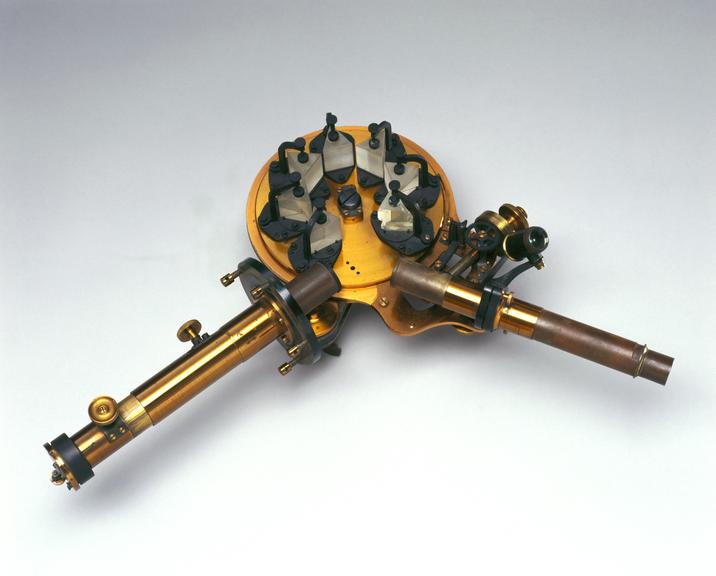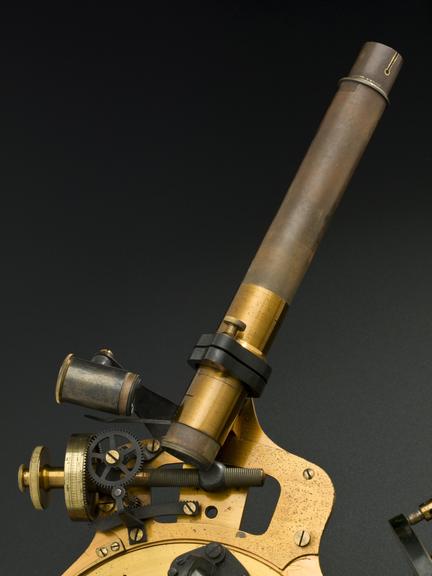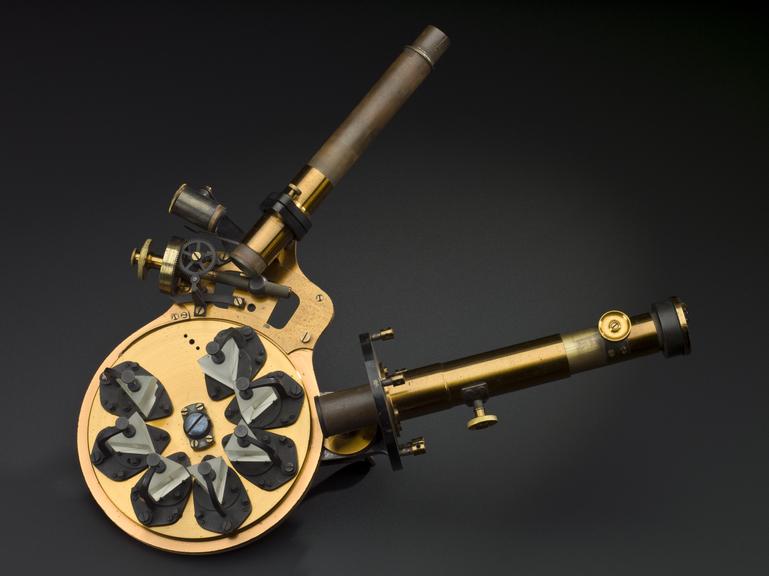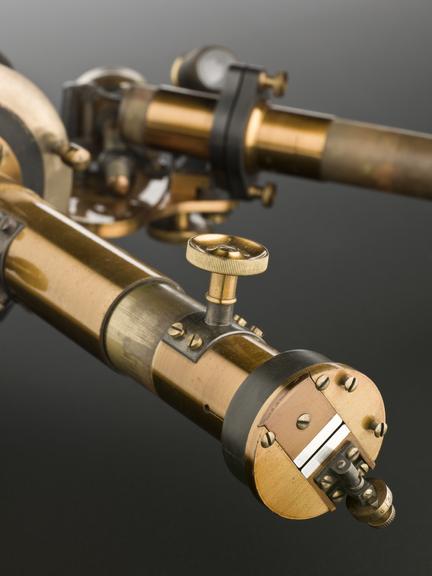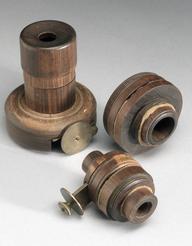
Norman Lockyer’s seven-prism spectroscope
Astronomical spectroscope from Norman Lockyer Observatory, brass, with train of seven prisms. Thought to be the one made by John Browning, London for Norman Lockyer who first used it to view Solar Prominences [chromosphere] outside a solar eclipse.
The astronomer Sir Norman Lockyer is believed to have used this seven-prism spectroscope. Ordered from the London instrument maker, John Browning in 1868, he was using it when he discovered an unknown spectral line in the Sun. He attributed this feature to a mystery element that he called Helium, an element that was only discovered on the Earth in 1894. Lockyer also used this spectroscope to observe prominences, flame features on the edge of the Sun that can be normally seen only during solar eclipses. Jules Janssen at the Paris Observatory simultaneously discovered this technique of viewing prominences outside eclipse. In recognition of their achievement the French government jointly awarded them a medal showing both scientists.
- Measurements:
-
overall: H. 120 mm x W. 350 mm x D. 280 mm, 3kg
- Materials:
- brass (copper, zinc alloy) , steel (metal) , glass and incomplete
- Object Number:
- 1987-1162/1
- type:
- spectroscope - astronomica and solar eclipse







